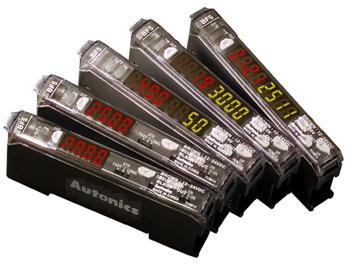Optical fiber sensor consumption value will reach 3.98 billion

Fiber-optic sensors are based on the conversion of optical quantities, using optical signals as a carrier for transformation and transmission, and optical fibers for conveying optical signals. There are many kinds of light sources. Commonly used light sources include tungsten lamps, lasers, and light emitting diodes. The fiber is very thin, soft, and bendable. It is a transparent, light-conducting fiber.
The optical fiber can transmit optical information because it uses the principle of total reflection on the optics. That is, light with an incident angle larger than the critical angle of total reflection can totally reflect at the interface between the core and the cladding, and the reflected light is still The light is incident on the opposite interface at the same angle, so that the light will be totally reflected and transmitted between the interfaces of the optical fibers. The attachments are mainly mechanical components that vary depending on the type of measurement parameters and the measurement method.
According to the latest report from ElectroniCast, from 2012 to 2017, the average annual growth rate of fiber optic sensor (including point-based and distributed) consumption is as high as 20.3%, and the annual consumption value will be from USD 1.58 billion in 2012. It grew to $3.98 billion in 2017.
However, the United States accounts for the vast majority of global fiber sensor market share. According to relevant data, the U.S. fiber-optic sensing market value was US$235 million in 2007, US$330 million in 2008, and approximately US$430 million in 2009, and is expected to reach approximately US$1.6 billion by 2014, with its compound annual growth rate. It is 30% higher than the global compound annual growth rate of 10%.
Optical fiber sensing applications are divided into five major directions:
(1) Oil and gas - Reservoir monitoring downhole P/T sensing, seismic arrays, energy industry, power plants, boilers and steam turbines, power cables, turbine transport, oil refineries;
(2) Aerospace - jet engines, rocket propulsion systems, airframes;
(3) Civil infrastructure - bridges, dams, roads, tunnels, landslides;
(4) Transportation - railway monitoring, weight in sports, transportation safety;
(5) Biomedical - Medical temperature pressure, intracranial pressure measurement, minimally invasive surgery, disposable probe.
According to forecasts, the market demand for distributed optical fiber sensors in 2013 will reach 586 million U.S. dollars (about 3.6 billion yuan), and by 2016 it will reach 1.1 billion U.S. dollars (about 6.7 billion yuan), 70% of which will be used for petroleum. Natural gas industry. Optical fiber is widely used in the oil and gas industry. However, this kind of optical fiber must be able to sense most of the physical properties at least from light intensity, displacement, temperature, pressure, rotation, sound, tension, to magnetic field, electric field, radiation, fluid, level, chemical analysis and vibration.
Mounter Feeders,Chip Mounter,High Speed Flexible Mounter,Smt Mounter
KE CHUANG EQUIPMENT(SHENZHEN)CO.,LTD. , https://www.smtkc.com